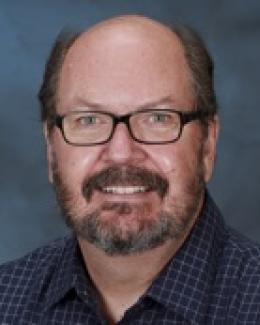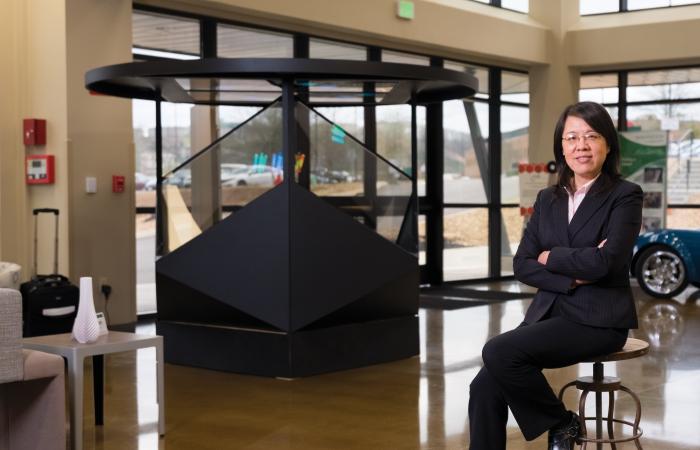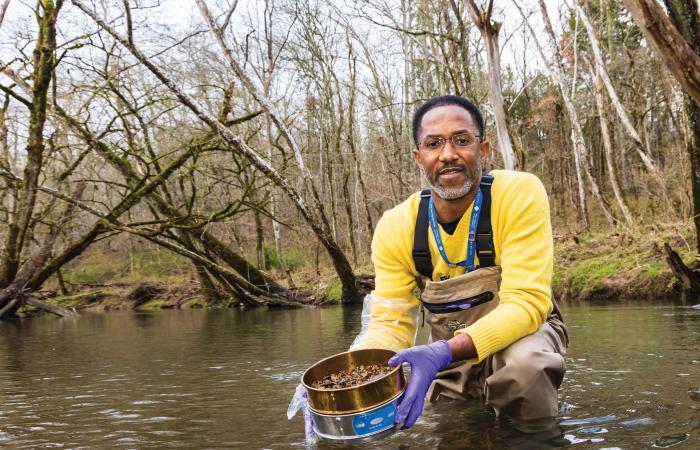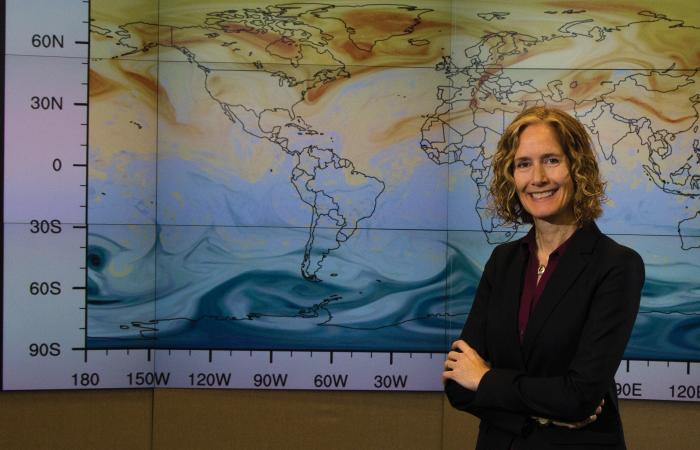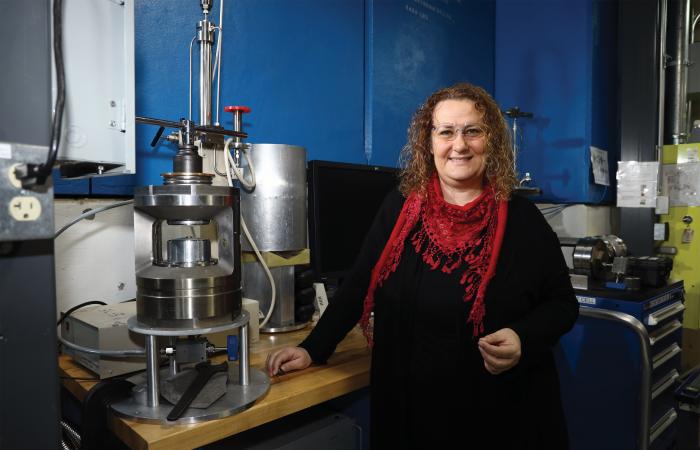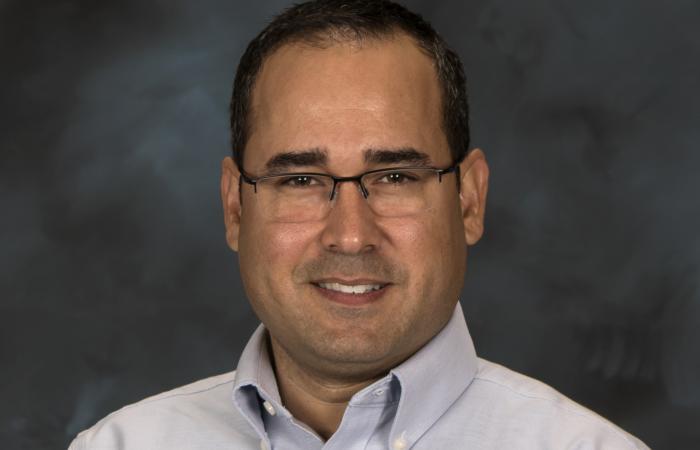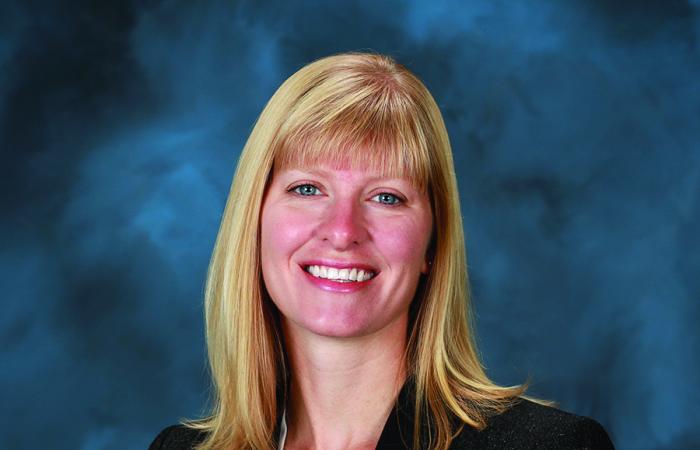It's easy enough to see why ORNL is looking forward to the coming decade and beyond.
As the largest national laboratory devoted to open scientific discovery, ORNL is home to leading research programs in areas ranging from physics and chemistry to engineering and environmental science.
Not only does it host the United States' most powerful scientific supercomputer (Summit) and two of the most powerful neutron scattering facilities (the Spallation Neutron Source and the High Flux Isotope Reactor), it is preparing for Summit’s far-more-powerful successor and for major upgrades to SNS. The lab is a leading contributor in 3D printing and carbon fiber production, microscopy and advanced materials research, climate science and isotope production. In fact, ORNL is home to 23 of 24 core capabilities important to its sponsor, DOE’s Office of Science, which is itself the country’s principal supporter of research in the physical sciences.
“We have responsibility for scientific instruments and infrastructure that enable breakthroughs not possible anywhere else,” said Lab Director Thomas Zacharia, who came to ORNL as a postdoctoral fellow in 1987.
“The impact of these capabilities is felt in all areas of our lives—in the energy that powers our businesses, homes and transportation; in the materials that enable our technologies; in medicine, the environment and our fundamental understanding of the universe,” Zacharia continued.
“The difference we make at Oak Ridge National Laboratory is not due to our facilities alone, however. Our impact year after year is driven by some of the best scientists, engineers, technical and support staff in the world. They come from all over the country and from dozens of nations, and they find solutions together they could never find alone.”
ORNL Review talked with a dozen researchers who have taken on leadership roles around the lab in recent years, asking them what scientific leadership means at ORNL, what prepared them for their roles and what they see in the future for their own fields and for the lab as a whole.
Focusing on individuals amid the big picture
Research leaders at ORNL are challenged to support the goals of some 2,000 staff scientists and engineers while achieving the labwide goals necessary to fulfill national missions in energy, security and scientific discovery.
“We cannot do the research if the people are not inspired,” said Juan Carlos Idrobo, leader of the Electron and Atom Probe Microscopy Group within the lab’s Center for Nanophase Materials Sciences. “I have my scientific vision, but that is my mountain. My job is to inspire and help my group members climb their own mountain. However, only together, as a team, will we be able to tackle big challenges and climb the Mount Everest of electron microscopy.”
Idrobo’s personal mountain is the ability to advance materials research by using an electron microscope to measure the spin and orbit of individual atoms. He expects to scale this particular summit in the next decade, an achievement that will spur research into the hard drives that maintain long-term data storage.
Across the laboratory, research teams strive to maximize the unique capabilities of the advanced instrumentation at their fingertips. It requires both passion and teamwork, said Bianca Haberl, who coordinates the high-pressure science initiative in ORNL’s Neutron Sciences Directorate.
“If you have exciting science projects, and the people you work with get equally excited about them, you all achieve more, because you all enjoy then what you’re doing,” she said.
Fortunately, Haberl’s specialty generates plenty of exciting projects. By taking advantage of ORNL’s neutron scattering facilities, scientists can, among many other tasks, replicate the conditions found deep within the Earth and other planets. Furthermore, materials show new behaviors when they are subjected to high pressure, including materials that hold promise as high-temperature superconductors.
In fact, Haberl noted, neutron scattering is ideal for studying these promising materials because the highest-temperature superconductors are rich in hydrogen, an element that, when it is next to heavier elements, is practically invisible to probing with electrons and X-rays.
While ORNL gives talented researchers the means to follow their passions, they must also be able to work together. Scientific leaders across the lab agree that a major part of their jobs involves getting people to move in the same direction.
This cooperation is especially important in up-and-coming fields like quantum computing.
“When quantum computing first popped into existence, it lacked a clear connection to the rest of the laboratory,” said Travis Humble, who heads the lab’s Quantum Computing Team. “Strong leadership has meant defining the direction of the science, navigating the many corridors necessary to stand up a high-profile program in a new technical area, and living at the intersection of physics and computers and engineering.”
Even in fields that have been around for decades, coordination is necessary for researchers to meet long-term goals. This is a challenge noted by Sarah Cousineau, who leads SNS’s Beam Science and Technology Group.
Cousineau’s group focuses on the proton beam that drives SNS and the cutting-edge neutron science taking place there. That beam is top-of-class now, she said, but there’s no guarantee it will stay in that position.
“Strong leadership to me means the ability to get a group of people to work together toward a common goal,” she said. “Right now, we have the most powerful proton beam in the world right here. If we want to maintain that edge, we need strong vision to keep us moving forward, to keep us on the frontier.”
Preparing future leaders
It takes a lot of work to get to the positions that these individuals occupy. Not only must they go through the years of schooling it takes to earn a Ph.D., they must also develop the skills to manage and lead talented colleagues.
Energy and Transportation Science Division Director Xin Sun stresses the need for research leaders to have a deep understanding of their fields.
“My background is technical, very technical,” she said. “Having grown up in the technical ranks, I feel the pain points of our staff. I view my job right now as being to enable the growth of capabilities by growing our staff.”
Sun uses that expertise to guide a division that encompasses a wide swath of ORNL’s research efforts, including those in transportation, building technologies, advanced manufacturing, energy efficiency, carbon fiber manufacturing and 3D printing.
Experience working in a variety of research settings is helpful, said Sandra Davern of the Nuclear and Radiochemistry Group. Davern leads the lab’s Next Generation Radiotherapeutics and Bioassessment Platforms project, which aims to expand the cancer-fighting usefulness of radium-223—an isotope that is produced at ORNL.
“I’ve had quite a diverse background,” she said. “I've worked in everything from medical research to plant biology to radioisotope research. I’ve carried out research at universities, medical institutions and this national lab, so I feel my career trajectory has allowed me to have a very holistic view of the development of research ideas, from the seed idea right through to where it can actually be an advantage to the general public.”
For young researchers interested in rising through the ranks of scientific leadership, a background in the nitty-gritty of running an organization is also invaluable. Not only does that involvement provide skills that don’t necessarily come with a Ph.D., but it provides a great opportunity to network and even find potential mentors.
Computational Sciences and Engineering Division Director Kate Evans, for example, served on Georgia Tech’s Graduate Student Senate while she was working on her Ph.D., and when she was a junior researcher at ORNL she ran her division’s seminar series. She encourages her young colleagues to take a similar approach.
“I took on opportunities that would help me grow my career both in terms of research and helping others to do research,” she said. “When you’re a young staffer, that’s things like organizing a session at a conference or a research journal club—where you organize small groups of people to do things. That’s a great way to get leadership experience, but still it’s all part of your research.”
The benefits of a large national lab
A large, scientifically diverse institution like ORNL provides a unique environment for developing scientific leadership, both in finding partners for interdisciplinary collaborations and in broadening one’s own expertise.
“I would say that ORNL is Disney for scientists,” said Hector Santos-Villalobos, national security researcher and leader of the Multi-Modal Analytics and Architectures Group. “Take me as an example. I came here to work at HFIR, doing neutron imaging. Then I had another job doing machine learning for medical imaging. Then I moved into biometrics. Now I do face recognition through windshields and see inside walls via ultrasound reconstruction.”
For researchers considering a move to ORNL, the lab’s reputation makes for a powerful draw. Materials Science and Technology Division Director Sean Hearne, for example, came to ORNL in early 2019, serving as CNMS director before taking on his current position.
Hearne says he was attracted by the lab’s history of solving critical challenges, especially in materials science.
“Oak Ridge is an international leader in materials science,” he said. “Being part of that team is a tremendous opportunity.”
Hearne noted that his division focuses on materials characterization, while Sun’s division—the Energy and Transportation Science Division—works to build the materials into structures.
“At Oak Ridge we have an entire pipeline from materials synthesis to characterization to fabrication to understanding, and we are using it to address the myriad of different national energy and national security challenges facing us today,” he said.
ORNL’s embrace of both basic and applied research also places it in a bright spot between academia and industry, according to Arjun Shankar, director of the lab’s Compute and Data Environment for Science and leader of the Advanced Data and Workflow Group.
“We have, in my opinion, the best of both worlds,” he said. “We can play a fantastic translational role collaborating with academics who focus on foundational work. And while industry has its market role, we can work with them to convert our foundational ideas of discovery and translate them to be commercially effective.
“Our ability to focus on the next big mission the country gets behind has been inspiring and a lot of fun.”
ORNL faces the future
ORNL’s size, scientific diversity and world-class staff also position it to be a major player in solving the country’s problems in the coming years. There will be no shortage of challenges in the foreseeable future, and no shortage of ORNL researchers keen to overcome them.
One important goal is to bring manufacturing back to the United States, noted Merlin Theodore, director of ORNL’s Carbon Fiber Technology Facility.
“It is very important for advanced manufacturing, especially given the fact that we’re trying to increase American competitiveness so that we can be the leading nation,” she said. “There’s a lot of things that we rely on internationally that we really shouldn’t have to, because we have the expertise and the sources here.”
Research organizations across the lab are preparing for future technologies. CSED director Evans noted that ORNL’s future in computing includes quantum as well as other seemingly futuristic technologies such as artificial intelligence and neuromorphic computing, which uses attributes of the human brain to make systems more efficient and less power intensive. As a result, she sees scientific computers being created for specific purposes.
“I have a feeling it might become more specialized,” she said. “Quantum computers will probably be very good and far superior to other computers at solving certain problems, but not all of them. Same with neuromorphic computers; they will be very good at solving certain problems, but not all of them.”
Cousineau and her colleagues at SNS will be getting ready for proton beams that are massively more powerful than any now in existence. For example, while the lab is preparing to upgrade the neutron source’s accelerator, beam scientists will be planning for future accelerators that are several times more powerful still.
“We are a 1.4-megawatt facility, and we’re going to go to 2.8,” she said. “But we need to start having a conversation about 10 megawatts. What does that look like? We're starting research efforts where we say, ‘How are we going to remove this hurdle? How are we going to remove that barrier?’ These are the things we are aiming at.”
For Earth Sciences Group Leader Eric Pierce, future upgrades to SNS and other facilities around the world will help him and his colleagues better understand the behavior of metals such as mercury in the environment.
“I think in five years, 10 years, we’ll answer questions around how our microbial communities in freshwater systems influence water quality, for example—how these communities change in their composition, what their function is, how they impact metal speciation,” Pierce said.
“Answering those questions is fundamental to understanding how metals cycle in the environment and how that impacts drinking water quality, the quality of our lakes and streams.”
For her part, the Nuclear and Radiochemistry Group’s Davern is looking to a future where radiation therapy is more effective and its effects less catastrophic.
“The opportunities are there for us to work together in cross-disciplinary teams to make better radiotherapeutics,” she said. “If we can have more targeted therapies that localize where you want them to be and don’t travel systemically as much throughout the body, then you can decrease those effects. There will never be none, but hopefully they will be less.”
For ETSD Director Sun, the future is an opportunity for the lab to live up to the reputation it has built over its seven-plus decades—a reputation built on the achievements of the Manhattan Project, the discovery of messenger RNA and the identification of the Y chromosome’s role in determining an individual’s sex.
“Right now we are positioned to do the big science that will have huge societal impacts,” she said. “If you look at ORNL’s history, in the end it really has societal impact.”
